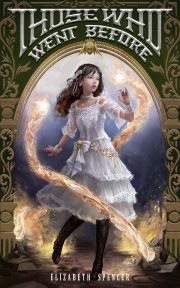Engaging Educational Markets with Genre Fiction
By Amber Morrell
Are you a children’s author wanting to visit schools this school year, but not sure how to make your pitch stand out? When it comes to marketing, most efforts focus on social media. But the target audience for children’s authors is not yet online. At the elementary level, they don’t have Twitter or even TikTok accounts (hopefully). The best marketing is to meet them where they are: school.
When you pitch your book to schools, whether it be for a school visit or to have the book added to the school library, the focus is often on what the book is about. But when it comes to the educational market, it’s important to have the same mindset as teachers, librarians, and administrators. Rather than focusing on plot and character, ask yourself: how does my book fit into this school’s existing curriculum?
You need to convince educators that your book will fulfill a specific need for their classrooms. Show librarians and gatekeepers that your work has educational merit by aligning yours to relevant content standards the school already uses. This isn’t anything new: publishers often put teaching guides in the back of books aimed at educational markets. If your publisher does not include this, or you are self-published, you can easily position your book this way on your own.
A good place to start is with your state’s education department website. Find the content standards for your area. Many states use Common Core, and you can find these standards on the Common Core website, which has an extensive list of standards for various subjects. Browse through the standards for your area and target age group and see which ones you can relate to your novel.
All novels will have some connection to language arts, but delve deeper into your book and find connections to STEAM (Science, Technology, Engineering, Art, and Mathematics) concepts. Science fiction is uniquely poised to connect with STEAM curriculum by the nature of its genre.
To demonstrate, let’s look at popular science fiction and fantasy titles that have won the John Newbery Medal, annually awarded by the Association for Library Service to Children, which is held in high esteem, especially in educational settings. A classic example is A Wrinkle in Time by Madeleine L’Engle, which has been taught in classrooms for decades, showing that educators and gatekeepers are not opposed to teaching genre fiction in classrooms. A page on the website for Madeleine L’Engle’s work is dedicated to the educational standards her book aligns with, including Common Core standards. In addition to language arts, A Wrinkle in Time includes physics, biology, and math concepts.
Now let’s imagine we are creating a similar resource for the most recent Newbery Medal winner: The Last Cuentista by Donna Barba Higuera. This novel features Petra, a young Hispanic girl, who uses folklore to preserve humanity on a generational spaceship. Some concepts in this book that would be of interest to educators include the importance of humanities (particularly, storytelling) in STEAM, astronomy and astrophysics, and biology. Browse your state’s standards and see if you can relate them to any of these concepts.
Now that you’ve decided which standards your book aligns with, you can use this information in a variety of ways. If you are pitching school visits, create presentations centered on these standards. Think outside the typical writer’s workshop: how can you create a content-aligned presentation that still relates to your book? Try creating a menu of different presentation options, each one centered on different content standards.
When creating and pitching school visits for my contemporary fantasy novel, The Alchemy of Letting Go, I avoid focusing on magic in favor of concepts that align more closely with educational standards. For example, I offer presentations on creating poetry and art from nature, entomology, and ecological preservation—all of which relate to my book, even if they aren’t the plot’s main focus. Adding in the relevant standards that these presentations meet makes it easier for decision-makers to understand how you fit into their educational mission.
When engaging with the educational market, meet schools where they’re at. Aligning your pitch to content standards will show that you’re going the extra mile to meet the needs of students.
 Amber Morrell writes whimsical fantasy and science fiction for children. Her work explores the liminal spaces between science and magic. By day, she is a librarian and freelance educator in Southern California. In her free time, she plays D&D, watches Star Trek, and makes TikTok videos about esoteric knowledge. Her debut middle grade novel, The Alchemy of Letting Go, is forthcoming from Albert Whitman & Company in Spring 2023.
Amber Morrell writes whimsical fantasy and science fiction for children. Her work explores the liminal spaces between science and magic. By day, she is a librarian and freelance educator in Southern California. In her free time, she plays D&D, watches Star Trek, and makes TikTok videos about esoteric knowledge. Her debut middle grade novel, The Alchemy of Letting Go, is forthcoming from Albert Whitman & Company in Spring 2023.


